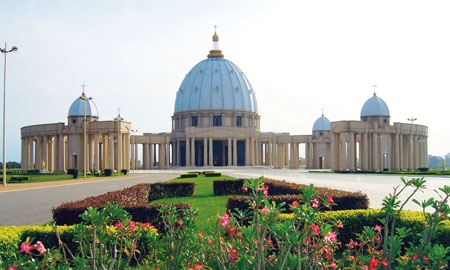As often as the adage of having ‘great tourism potential’ might be over-applied to many of the continent’s rapidly developing countries, Côte d’Ivoire is one example that certainly seems to fit the bill. Holding some of the most impressive natural assets in the whole of western Africa, it is home to one of the region’s last remaining areas of primary tropical rainforest, a vast coastline scattered with white-sand beaches and a unique cultural diversity of tribal tradition.
Indeed, aside from such qualities, the stunning and shimmering modernity of à la mode Abidjan (suitably nicknamed the “Paris of West Africa”) as well as Yamoussoukro’s famous basilica (an astonishing replica of Rome’s St Peter’s), demonstrate that this part of the world has the necessary draws to make it a genuine tourism hotspot.
And so, with the country in the midst of newfound stability, Côte d’Ivoire is finally looking to take full advantage of an industry which is seen as vital to boosting economic growth and improving livelihoods.
“The objective is to go from around 300,000 tourists in 2012 to 500,000 in 2015 and 1 million tourists in 2020,” says the Minister of Tourism, Roger Kacou. “It’s an ambitious goal that requires substantive work, much of which is being done right now.”
“The objective is to go from around 300,000 tourists in 2012 to 500,000 in 2015 and
1 million in 2020 – ambitious goals that
require substantive work”
Roger Kacou, Minister of Tourism |
As with many other similarly ambitious African nations looking to increase their presence in one of the fastest growing sectors in the world, such work typically involves addressing the challenge of alluring both tourists and investors alike, not only by promoting the image and branding of the country, but by making improvements to the business environment and state of infrastructure.
“[The government] is working to recreate this environment of trust that can attract large companies to Côte d’Ivoire,” continues Mr Kacou. “The Ministry of Tourism must work with infrastructure and security, plus the transport and health ministries.”
While large-scale projects are already under way for the rehabilitation of roads and airports in order to maximise the country’s number of viable tourism destinations, given its recent troubled past, the area of security is one of particular concern.
“We are just coming out of a period of political crisis,” the minister explains. “The level of security has improved dramatically but it is not yet at zero. We must be sure to receive tourists in the best condition so they can enjoy everything we have to offer.”
Currently, the British Foreign and Commonwealth Office advises against travelling to some south-west regions; however, with the rest of the country now (in the most part) deemed safe, Côte d’Ivoire is once again in tour operators’ brochures and tourists are returning. Such is the ongoing recovery of the tourism industry that in some cases demand is now even outweighing supply.
The Société des Palaces de Cocody (
SPDC) is the public structure in charge of managing the country’s portfolio of state-run hotels. Its CEO Maférima Diarrassouba has seen firsthand the impact of the crisis as well as the remarkable revival since the restoration of peace.
“During the crisis, occupation rates plummeted and large groups such as Intercontinental left the country. Our occupation rate at the Hotel Ivoire was barely 20 per cent. Today, we cannot meet the demand,” she says.
“We expect to see large UK investments here. It will raise the quality of our offer and create healthy competition”
Maférima Diarrassouba,
CEO of the SPDC |
Meanwhile, the SPDC is not only seeing a greater influx of tourists, but of foreign investors too.
“There is a lot of private interest and several large investments are already planned, such as by Radisson near the airport. As far as we are concerned, we will be making a total of 500 extra hotel rooms available by the end of 2015,” claims Ms Diarrassouba.
And so, with its tourism sector finally heating up in terms of arrivals and business competition, one particular market that the country hopes to attract is that of the UK – Europe’s top tourist exporter. While it is hoped and rumoured that British Airways will soon be returning its service to Côte d’Ivoire, the country is confident that holidaymakers and investment from the UK will inevitably soon follow.

0 COMMENTS